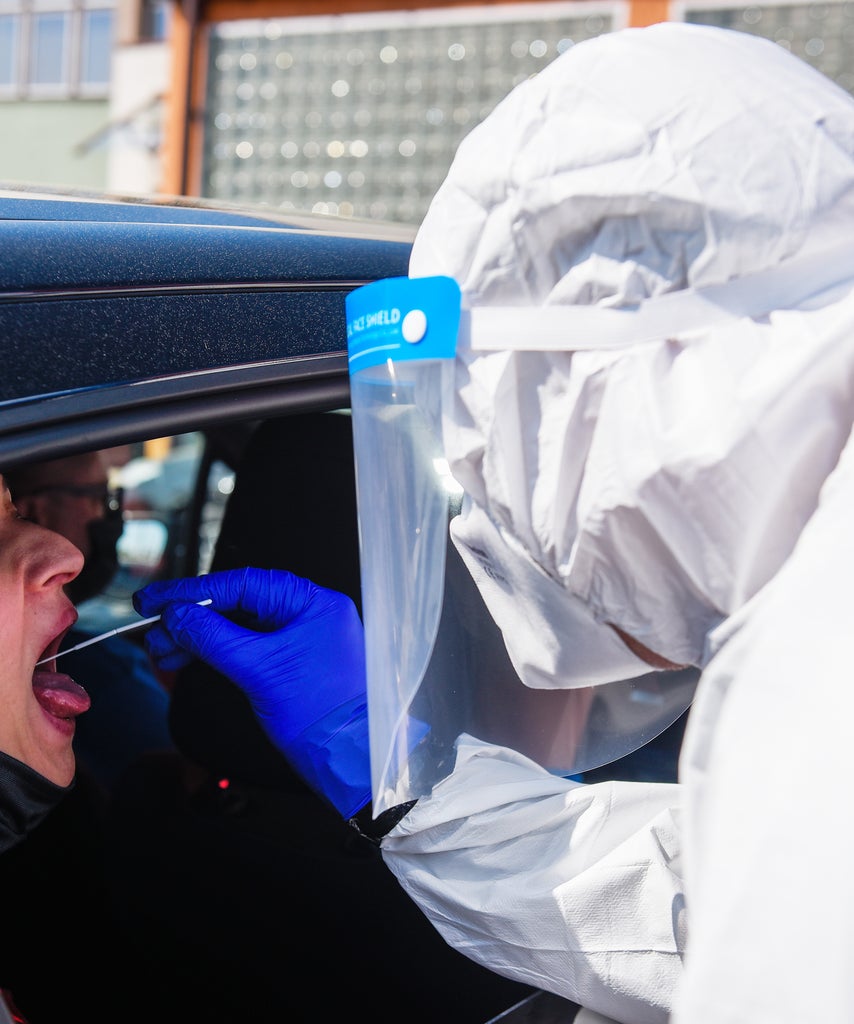
The anecdotes we’ve been hearing about COVID-19 testing have been pretty grim: long lines, a painful nasal swab, an agonizing wait to get your results. But now there’s a new test available, one that seems to make the entire process a breeze: a saliva test, which received emergency use authorization from the Food and Drug Administration on Saturday.
The test is called SalivaDirect, and it was developed by researchers at the Yale School of Public Health. It’s easy to see why people are so excited about it. Spit gets collected in a sterile container, then is sent off to be tested for SARS-CoV-2, according to the FDA. The test requires no special swabs or collection devices, and since healthcare workers can stay farther away while administering it, it may be safer too. It’s also pretty cheap. Labs could charge as little as $10 per sample to run the test, Nathan Grubaugh, PhD, a member of the team that developed the test, revealed in a press release.
SalivaDirect can be readily available for use immediately, thanks to Yale’s “open source” protocol. That means “designated laboratories could follow the protocol to obtain the required components and perform the test in their lab according to Yale’s instructions for use,” the FDA explained.
Okay, but we went through this with the COVID-19 antibody tests. There was an initial burst of excitement, quickly tempered by an emphasis on the tests’ fallibility. So how accurate is the saliva test, really?
According to Yale, results so far have found that SalivaDirect is a highly sensitive test and has yielded similar outcomes as nasopharyngeal swabbing (aka the uncomfortable nasal swab test). The lab director, Charles Lee, PhD, emphasized that the test was more accessible, more economical, and delivered faster results, while “maintaining acceptable test accuracy.”
In a preprint paper posted on Medrxiv, the Yale team got a little more specific, writing, “When comparing paired nasopharyngeal swabs and saliva specimens using the authorized ThermoFisher Scientific TaqPath COVID-19 combo kit and our SalivaDirect protocol, we found high agreement in testing outcomes (>94%).” Translation: The SalivaDirect test picked up on the virus in 94% of tests that the nasal swab test did (32 out of 34 tests).
According to an article published on Managed Healthcare Executive, Chantal Vogels, PhD, a Yale postdoctoral fellow who led the laboratory development, said the saliva test may miss “weakly positive” samples, “for instance a patient who is recovering.”
Shannon Sovndal, MD, an emergency medical services medical director in Boulder, Colorado and the author of Fragile confirms to Refinery29 that while the SalivaDirect test is promising, we should still be cautious.
“It’s definitely promising, and we’re hopeful to find a different test beside the nasopharyngeal swab because that’s just more expensive and time consuming,” he explains. “Clearly, if we can find a test that’s as quick as spitting in a cup that’s easier to transport and costs less, we can get more rapid testing done. The hope is that that it’s accurate and gives us good data.”
There are reasons to be a little wary, though. “When you get emergency approval, it means that it hasn’t gone through the complete, rigorous studies that would normally take place,” Dr. Sovndal says. “We’re hopeful that a test like this works, but the initial approval was based on the fact that [Yale] was getting similar results to the nasal swabs.” Nasal swab testing is through to be relatively accurate, but all tests need to be studied more before any can be declared the end-all, be-all, he says.
“This is an extraordinary time. We’re in the middle of a pandemic, figuring out how to best control it. That’s why the FDA granted emergency use and that’s why it’s done more quickly,” Dr. Sovndal says. That means, he says, we have to take most COVID-19 information — including new studies about how it’s spread and new tests that get approved — with a grain of salt. They may be useful or helpful or accurate, but they still need more evaluation.
The bottom line: The new spit test is a great option if you suspect you were exposed to or have COVID-19. But no, it isn’t always 100% accurate. (No test is.)
It’s also still critically important to focus on prevention, so follow the same advice you’ve been hearing since March: Wash your hands, wear face masks, social distance, and stay inside when you can.
Like what you see? How about some more R29 goodness, right here?
Florida Men Arrested For Selling Fake COVID Cure
Did Trump Really Just Call Testing Overrated?
Facebook Has Finally Decided To Censor Trump
from Refinery29 https://ift.tt/34aOZos
via IFTTT
